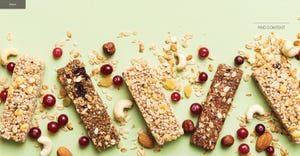Consumers are drinking beverages throughout the day as social norms focus on hydration and the other health benefits of drinks.
October 26, 2020

Food and drink are increasingly socially acceptable in almost all spaces of our lives, from work to school, to cars, buses and trains, to shops and many other public spaces. The Hartman Group’s Modern Beverage Culture 2018 report found 65% of consumers always have a beverage on hand, including 73% of Millennials, 63% of Gen Xers and 58% of Baby Boomers.
The combination of relaxed norms around eating and drinking, and the increased importance of health and wellness in our food and beverage choices, has expanded the roles beverages play. Beverages are increasingly used as a source of nutrition and substitute for food.
The idea of hydration has been especially important in expanding the range of occasions in which it is socially appropriate to have a beverage. “Hydration” decouples drinking from thirst, making it not only acceptable, but encouraged, to always have a beverage handy.
With increasingly hectic consumer lifestyles and a growing field of options, beverages are carrying more of the nutritional and emotional burden of consumers’ days. Heightened self-awareness, higher standards for what they put in their bodies, and access to an increasingly distinctive array of beverages have raised the game for what it means to meet consumers’ needs.
Today’s beverage culture: Beverages with a purpose
To truly understand the food and beverage industry, one must first understand “the culture.” Specifically, and sharing many similarities with food culture, American beverage culture represents the epitome of consumer choice—where a vast array of options exists (with more options waiting to be created) to solve evolving needs and lifestyles where convenience is paramount.
The Hartman Group’s Modern Beverage Culture 2018 report found beverage culture includes shared beliefs and behaviors around drinking, including beliefs around what is appropriate to drink, when, how and with whom. In today’s culture, consumers are seeking beverages with purpose.
While the 1980s were about the emergence of awareness of the environment, and the 1990s saw the rise in natural and organic, the dawn of a new millennium in 2000 brought a new era focused on health and wellness. This time witnessed the evolutionary shift in consumers’ attitudes about functional foods from “food as not medicine” to foods and beverages that are “better for me,” to today’s current mindset of consuming beverages that “help me be the best that I can be.”
While much of the focus of beverage consumption is on hydration and naturally functional drinks, contemporary health and wellness notions include the idea that the best health solutions are personalized, and that food and beverages can be used to achieve optimal performance.
Performance is no longer a benefit reserved for athletes and fitness buffs, but it is something that touches all consumers as they seek to excel in and enjoy all aspects of life.
Performance is targeted functionality. It is using beverages for a specific, intended purpose. Consumers use coffee throughout the day to stay alert. They use protein shakes to help muscles recover after a workout and have a chamomile tea before going to bed to help relax to get a good night’s rest.
Performance is about a positive outlook. It’s how consumers can elevate their game. “How can I be the best I can be in that meeting?” It’s about using beverages to help attain peak performance in every aspect of life. The Hartman Group’s Health + Wellness 2019 report found 62% of consumers said the meaning of health and wellness is “feeling good about myself.”
Consumers intentionally think about the beverages they drink and consider if they will deliver a specific benefit/result that is needed. Forty-four percent of consumers said it was important “that my beverages do something for me” (such as provide energy, nutrients or other benefits), according to The Hartman Group’s Modern Beverage Culture report.
While performance is targeted functionally, consumers focus on inherent functionality—not scientific functionality. Inherent functionality is having naturally occurring health benefits.
Marketplace change: Shifting cultural values
As shifting cultural values drive companies to respond to the changing beverage market, new options within it drive more customers to adopt new values, such as:
Back-to-nature beverages: Reflecting a desire for simpler ingredients and production methods elevates products like kombucha and less-processed formulations (e.g., real sugar in soda).
Drink responsibly 2.0: Consumers search for information and assurance around sourcing, which creates new dimensions of quality in many beverage categories, especially those with an agricultural association, like coffee and milk.
Drinkable discovery: The pursuit of diverse flavors and benefits prompts consumers to explore new beverage styles and ingredients from around the world, creating opportunity for new categories to emerge while transforming formerly staid categories like beer.
In whatever setting consumed, beverages are a means for people to express themselves. The beverages market offers a complex, compelling landscape full of strategic implications for manufacturers, retailers and restaurant/foodservice operators.
Laurie Demeritt is CEO of The Hartman Group, where she drives the vision, strategy, operations and results-oriented culture for the company's associates as The Hartman Group furthers its offerings of tactical thinking, consumer and market intelligence, cultural competency and innovative intellectual capital to a global marketplace.
About the Author(s)
You May Also Like




